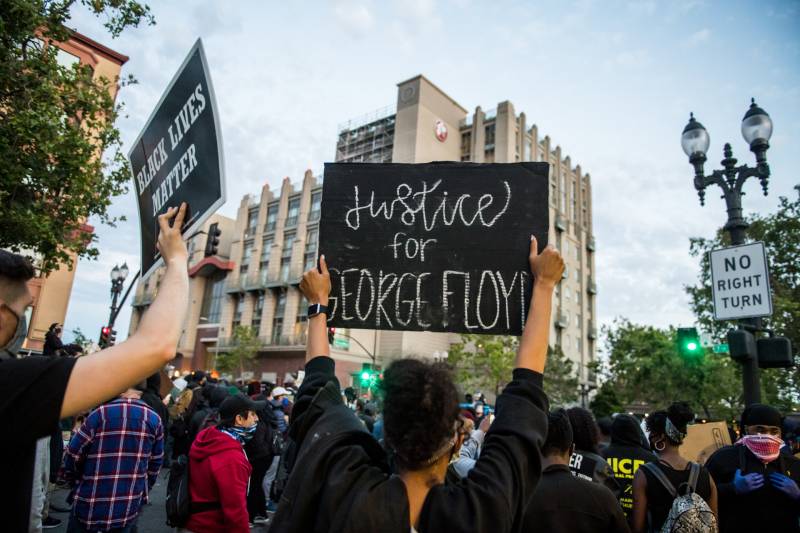As protests over the killing of George Floyd by Minneapolis police have continued across the Bay Area this past week, you probably have questions about everything from the history of protesting for racial justice to how much you should worry about coronavirus in relation to protests.
We're working on collecting your questions and providing you with answers. Submit your questions here.
On Protesting in the Time of COVID-19
(From the Avoiding Coronavirus While Protesting episode of Forum)
Q: [Protesting] is a big risk, isn't it, with all these people crowded together?
A: "I think it depends on the situation. We've all seen people widely spaced apart. But then, of course, if you saw the Portland Bridge ... they were pretty close together. So I do think there is a risk there. I mean, there was equally a risk Memorial Day weekend when we saw people out partying with no social distancing and no masks. So I think that's a real contrast. But certainly it brings public health people concern around testing and watching trends." — Dr. Yvonne Maldonado, professor of pediatrics, epidemiology and population health, Stanford University School of Medicine
Q: The surgeon general of the United States, Dr. Jerome Adams, said this could lead to not only new outbreaks, but it could lead to new clusters. How worried should we be?
A: "We're learning more about these potential super-spreading events or super-spreading phenomena, and it's hard to know ... I think we're learning a lot right now about what might happen. We've been tracking, at least I have been tracking the post-Memorial Day situation in particular in areas where there was a lot of partying. And surprisingly, either people aren't getting tested or they're really not getting infected. Either of those could be true. I'm sure the public health departments in these areas are really looking into additional surveillance." — Dr. Yvonne Maldonado, professor of pediatrics, epidemiology and population health, Stanford University School of Medicine
Q: What do we know about screaming, coughing, chanting or singing and the spread of the coronavirus?
A: "A lot of these engineers and physicists have been publishing more and more data around this idea. And for us epidemiologists 'aerosol' means one thing that's different from what a physicist thinks. For us, 'aerosol' means droplets that really do stay in the air for longer periods of time, all by themselves. And I think when we talk about aerosol here, we're talking about the ability to transmit a droplet through the air for a sustained period of time in certain situations ...
"When you're crowded, when you're yelling, when you're singing – certainly the Seattle situation was a very good example of an event where people were together for many hours in close quarters and they were singing, expelling droplets for sure – and we saw many infections and actually a couple deaths. So ... clearly those things will need to be taken into account.
"I think the good news here is that most of these people are outside and they're wearing masks, so that may be helpful." — Dr. Yvonne Maldonado, professor of pediatrics, epidemiology and population health, Stanford University School of Medicine
